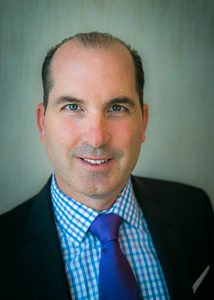Emerging risks or traditional lines, innovation makes the difference
The surplus lines market is eyeing another year of solid results for 2015.
At press time, the final figures for 2015 surplus lines had yet to be released but according to Brady Kelley, executive director of the National Association of Surplus Lines Offices, the financial stability of the industry remains strong and for the 12th year in a row, the annual U.S. Surplus Lines – Segment Review, produced by A.M. Best shows no financial impairments in the surplus lines segment in 2015.
“We continue to see strong balance sheets and resulting secure ratings, so these quantitative signs all point to good conditions for surplus lines,” said Kelley.
That doesn’t mean the industry is without challenges. An oversupply of capital in today’s market continues to pressures rates and heated competition is leading some excess and surplus (E&S) executives to question the future of E&S in certain sectors.
According to Jeremy Johnson, president of U.S. Commercial, AIG, the current competitive situation may be too heated.

U.S. Commercial, AIG
Johnson says today’s pricing on catastrophe exposed property is simply unsustainable.
In a market where interest rates remain “very depressed,” Johnson says, E&S insurers must “make sure that we continue to focus on underwriting discipline.” That means being able to underwrite to a profit. “And that’s a challenge in such a competitive market.”
While the current market can make writing to a profit a challenge, one upside is that such competition breeds innovation and creativity.
“There’s always opportunity,” Johnson said. “Innovation is absolutely in our DNA.”
Competition Gets Creative
Art Davis, president of Argo Group’s excess and surplus lines, agrees there is opportunity and that competition forces E&S players to get creative.

Creativity doesn’t come simply from new and emerging risks, which the E&S market is particularly known for. Innovation often happens in traditional lines and classes of business, which is where some E&S carriers happen to be seeing significant premium growth.

North American Casualty, Allied World
Cellura says the E&S industry continues to innovate coverages and approaches for these traditional exposures every day, he added.
Allied World has seen significant growth in commercial construction projects, for example, Cellura said. Changes in this sector involving regulation, the definition of occurrence, and project funding have led E&S insurers like Allied World to respond to changing risk exposures.
For example, “there are public-private equity companies that are investing in giant portfolios of single family homes that they are turning around and then managing as rental properties, then packaging those properties as investment assets,” Cellura said. “That, on the face of it, is a rental/habitational/real estate risk exposure but it has significant additional risk associated with the way those portfolios are put together and managed. To me, that’s an evolving E&S exposure in a traditional class of business.”
Servicing
Innovation doesn’t have to be limited to a risk transfer insurance product, either. “It can also involve services that surround those products,” Cellura said. “Insurance companies are often in a unique position to have access to a lot of data and to understand different exposures that enable us to bring services and resources to the table for our customers. Those can be engineering, loss control, legal services, etc. That’s another area of innovation that sometimes gets lost.”
Argo Group’s Colony Specialty has also found opportunity in a traditional class – small business.
“We write a lot of startup ventures, new businesses,” Davis said. While there are plenty of markets trying to compete in this space, Davis said, his company has achieved some growth by targeting a specific niche within the small business space and “thinking differently” about their specific exposures.
“There are a lot of people out there doing a lot of creative things so trying to capture this part of the market is a challenge,” Davis said. Argo, in another example continues to invest in new businesses that often operate as web-based only businesses. “These are entrepreneurial folks starting out very, very small and not in a traditional store front setting,” he said.
To succeed in this competitive space, Argo has had to think about what works best to capture their attention. “How do we sell products that would be attractive to them? This requires thinking differently about the risk while also trying to understand what that market will look like in the next five, 10 or even 20 years from now.”
For AIG’s surplus lines company, Lexington Insurance, some areas of E&S have proven to be less profitable than hoped while others show potential for growth, Johnson said.
“We are taking a pretty disciplined view of our book and our exposures,” he said. “There are areas of our portfolio, small niche areas, that we think the pricing has become unsupportable, so we are showing some additional restraint. And equally, there are parts of our portfolio that we want to continue to manage growth.”
Flood
Flood insurance is one area of that could present opportunity for some E&S carriers, especially as data models advance.
“There continues to be a considerable opportunity for private market solutions in the traditional NFIP (National Flood Insurance Program) space,” Johnson said. “I think as we at AIG, and the industry in general, becomes more sophisticated in terms of using data models we will continue to see really interesting opportunities for developing private market for flood.”
Beyond just flood, providing improved data and analytics can also be a source of growth.
“On the more commercial side, moving away from the NFIP space, I think for us the opportunity is around data and analytics – to be able to provide our customers with really sophisticated data modeling so they can understand their cat risk through better modeling, enhanced computer power and better understanding of data.”
Cyber
Lexington and other carriers continue to target the cyber market, which has been touted as the fastest-growing E&S market ever. However rapidly changing exposures have left some insurers questioning just how profitable the coverage will be going forward.
The ultimate profitability of the P/C industry’s cyber insurance efforts will take some time to assess as the market matures and future cyber-related loss events emerge, according to Fitch Ratings.
Johnson says Lexington is willing to take that bet and remains committed to the cyber insurance space.
“We continue to see tremendous opportunities in the cyber space but view the product shifting from product to peril, if you will,” Johnson said. “I think that the market will grow dramatically and significantly as the cyber peril continues to morph and emerge.”
Argo Group’s Davis says everyone is eyeing cyber and looking for solutions to the many “gray” areas in coverage.
“Standard is not a word I would use for cyber at all,” Davis said. “There are so many gray areas and questions about how it is going to evolve in the future. Is it really just an insurance solution or is it an overall product solution for how to help people get back on their feet?”
Like Lexington, Argo Group and Allied World are heavily invested in developing cyber products.
Topics USA Cyber Carriers InsurTech Excess Surplus Flood AIG
Was this article valuable?
Here are more articles you may enjoy.



 ‘Great Resignation’ Enters Third Year as Workers Embrace AI, Upskilling, PwC Says
‘Great Resignation’ Enters Third Year as Workers Embrace AI, Upskilling, PwC Says  Zurich to Buy AIG’s Travel Insurance Business for $600 Million
Zurich to Buy AIG’s Travel Insurance Business for $600 Million  Allstate, Nationwide Post Dramatic Q12024 Homeowners Loss Ratio Drops: S&P
Allstate, Nationwide Post Dramatic Q12024 Homeowners Loss Ratio Drops: S&P  Coverage Needed: Hundreds of Thousands in SE Now in Flood Zones With New Maps
Coverage Needed: Hundreds of Thousands in SE Now in Flood Zones With New Maps 



